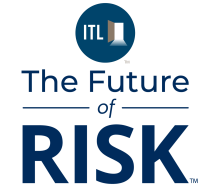The commercial property and casualty (P&C) insurance industry stands at a pivotal moment that mirrors the dawn of the internet era. Just as companies that dismissed the internet in the mid-1990s found themselves scrambling to catch up years later, today's insurers face a similar inflection point with artificial intelligence. The message is clear: AI adoption in claims processing is no longer optional, it's inevitable.
For C-level executives in P&C organizations, the question has shifted from, "Should we implement AI?" to, "How quickly can we integrate AI effectively?" This urgency isn't driven by hype but by compelling market realities that demand immediate attention.
Why AI Is Now Inevitable in Claims
The evidence supporting AI's inevitability in claims processing is overwhelming. According to a 2024 Carrier Management study, approximately 66% of P&C carriers plan to use AI for operational decisions within the year, while current adoption hovers around 14%. This gap doesn't indicate hesitation, but it signals a massive wave of implementation about to break across the industry.
Executive sentiment confirms this trajectory. A 2025 survey by Roots Automation revealed that 90% of insurance executives express optimism about AI, with two-thirds being "strongly in favor" of its application within the insurance sector.
Early adopters are already demonstrating remarkable results. Sedgwick, a prominent claims management service provider, reduced claim review times from 15 minutes to just 2 minutes per claim using generative AI. Similarly, CURE Insurance reported productivity gains of 60–70% in their claims operations through AI deployment. These aren't marginal improvements; they represent transformative efficiency gains that translate directly to competitive advantage.
Capital investment patterns confirm AI's central role in insurance's future. According to Gallagher Re's Q2 2024 findings, over 63% of global insurtech funding was directed toward AI-first solutions.
The High Cost of Inaction
While the benefits of AI adoption are compelling, the consequences of delay are potentially devastating. Organizations that hesitate will find their competitors settling claims faster and more efficiently, damaging customer satisfaction and retention.
The financial implications are equally concerning. Without AI automation of routine tasks, loss adjustment expense (LAE) ratios will remain stubbornly high compared with AI-augmented competitors. This hurts profitability and the ability to offer competitive premiums.
The internal impact on workforce capabilities presents another risk. A 2025 study found that 58% of claims professionals using AI report low confidence in available technological tools, often linked to insufficient training. Organizations without comprehensive AI adoption plans will see existing technology gaps widen, leading to decreased employee morale and difficulty attracting talent.
Perhaps most critically, regulatory scrutiny of AI in insurance is intensifying. As of March 2025, 24 U.S. states had adopted the NAIC Model Bulletin on the Use of Artificial Intelligence Systems by insurers. Companies operating without formal AI policies are not only unprepared for regulatory inquiries but are at higher risk of non-compliance.
The Imperative of a Formal AI Policy
As organizations integrate AI tools into their core operations, establishing a comprehensive AI policy becomes foundational for responsible innovation and risk mitigation. This policy must address how AI technologies are developed, deployed, and managed within the claims organization.
A robust AI policy ensures alignment with regulatory requirements, establishes clear accountability for AI-driven decisions, and provides guidelines for responsible data usage. It also creates transparency for stakeholders, building trust in how AI is being leveraged.
Navigating Security and Confidentiality Concerns
For many executives, security and confidentiality concerns represent the most significant barrier to AI adoption, particularly regarding large language models (LLMs). These concerns are valid but manageable with proper governance.
The key is implementing appropriate safeguards, including data anonymization, secure API integration, and clear policies on what information can be processed through external AI systems. Many organizations are finding success with hybrid approaches that leverage both internal, secure AI systems for sensitive data and external tools for non-sensitive tasks.
A Familiar Turning Point
The current AI inflection point bears striking similarities to previous technological revolutions that transformed the insurance industry. In the 1980s, early PC adopters gained significant advantages in data processing. In the mid-1990s, companies that embraced the internet established digital presences that became crucial competitive differentiators.
Today's AI revolution represents a similar watershed moment. Early adopters are establishing capabilities and competitive advantages that will be increasingly difficult for laggards to overcome.
Your Next Move: Strategic AI Adoption
For P&C claims organizations, the path forward is clear: Strategic, governed AI adoption is now mission-critical. This doesn't mean reckless implementation but rather a thoughtful approach that balances innovation with appropriate governance.
Begin by assessing your claims processes to identify high-impact AI opportunities. Develop a formal AI policy that addresses governance, security, and ethical considerations. Invest in training to ensure your workforce can effectively leverage AI tools.
The time for tentative exploration has passed. The organizations that will thrive in the next era of insurance are those taking decisive action today to harness AI's transformative potential in claims.






